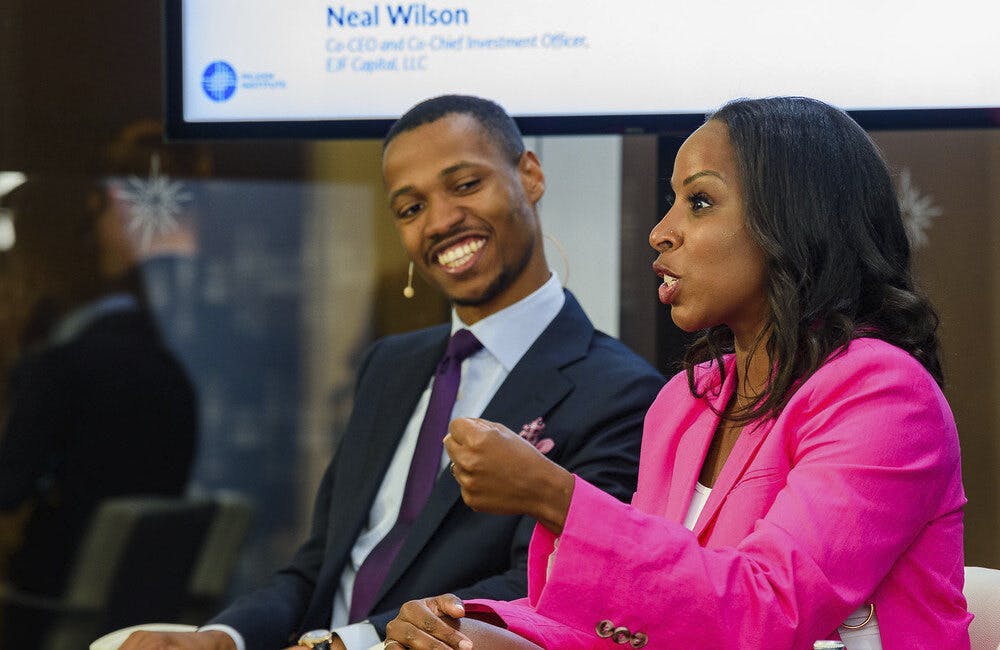Agencies are Focusing on Workforce Development to Support Tech Adoption
New workforce initiatives at DOD and DHS aim to drive technology adoption and implementation.

As government works to integrate innovative technologies that expedite speed and effectiveness of its services, federal leaders are focusing on upskilling, training and hiring to continue to build upon these new opportunities.
“One of our critical moments as it related to culture and making that shift was solidifying and providing a platform for version control. That platform provides us the capability to do openness, transparency and collaboration,” said Rob Brown, CISO at U.S. Citizenship and Immigration Services.
USCIS started its digital transformation journey about five years ago and fully embraced Agile within the development practice. Brown noted that his agency used a “shotgun approach” to provide its workforce with an understanding of its transformation process and create new workflows and processes for teams to follow.
While this method worked well for adoption, Brown explained that USCIS ran into redundancy challenges around platforms and tooling. The agency is working to reduce its cognitive load and embrace a culture of scale that could be duplicated across the organization.
“As it stands today, we’ve matured to a point where we have teams that are deploying numerous times a day. That has become the culture and the baseline for the past three years,” Brown added.
Within the Defense Department, the Navy is driving collaboration and making new connections with its innovation work across the department, said Kevin Burnett, technical director for the program executive office for manpower, logistics and business solutions at the Naval Information Warfare Systems Command. A large part of successful collaboration lies in change management.
“There’s a huge element of changing behavior and driving culture change,” Burnett said.
While the Navy has had successes as it modernizes, emerging technologies like DevSecOps remain obsolete. Burnett noted that organizations should implement quality gates as opposed to compliance gates.
“That’s a real culture problem we still have in the Department of the Navy, especially in the cyber world. We do a lot of development that culminates in some increment that is ready for release, then it begins the cycle of compliance checking to get into operations, but it’s not an active part of the Agile cycle that we want,” Burnett said.
To solve this challenge, the Navy is making small improvements to produce rapid outcomes, then implement the same processes and capabilities on a larger scale. Culture is the largest component of these shifts. Burnett noted that the workforce needs to be prepared to collaborate and leaders should empower the workforce with the skills and training to succeed.
“We’re pushing the envelope as much as we can as it relates to hiring new personnel and upskilling existing personnel,” Burnett said. “We have an Innovation Support Services portfolio that we stood up. One of the major lines of effort is workforce agility … to apply modern workplace practices in everything we do.”
Taryn Gillison, portfolio manager at the Navy’s Program Executive Office of Digital and Enterprise Services, said her division has reorganized itself into “portfolios” that are intended to produce and maintain capabilities following a service delivery model.
“We use feedback from the end users to drive improvements to the various features. That allows us, in the future, to deprecate features or capabilities that become obsolete,” Gillison said. “We’re focused on delivering environments that can be built and then adapted to fulfill multiple use cases for a variety of customers.”
By implementing new processes that truly drive transformation, organizations need support from senior leadership. Gillison noted that leaders should be focused on finding process constraints and removing blockers to increase the speed of modernization and reduce legacy systems.
“[Leaders] should start driving toward their Agile and DevSecOps journey,” Gillison said. “Driving toward automation and automated testing and tools can allow teams to free up cycles so that they can then focus on modernizing and making strides in that area … It’s really about people, processes and culture shifts.”
As organizations continue to drive culture change, Brown noted that investments in cloud will support continued innovation and increase speed. Gillison also said that providing a workforce with “free space” to innovate empowers them to iterate on their successes.
“I highly recommend investing in the cloud. Create those building blocks, think about developer experience, and if you can, leapfrog tech that is focused on that experience and transparency,” Brown said. “Full autonomy is also important so these folks can do what they need to do with the proper gates.”
This is a carousel with manually rotating slides. Use Next and Previous buttons to navigate or jump to a slide with the slide dots
-

Trump Executive Order Boosts HBCUs Role in Building Federal Tech Workforce
The executive order empowers HBCUs to develop tech talent pipelines and expand access to federal workforce opportunities.
3m read -

Tracking CIOs in Trump's Second Term
Stay informed on the latest shifts in federal technology leadership as new CIOs are appointed and President Trump's second term takes shape.
6m read -

DOL Turns to Workforce Development to Maintain AI Superiority
DOL is bridging the AI skills gap through partnerships and upskilling to ensure future AI workforce readiness.
10m watch -

Trump’s Executive Order Spurs Federal Push for AI Literacy
Agencies are ramping up AI literacy efforts across the federal workforce and education systems after Trump's executive order on AI education.
5m read -

White House AI Czar Outlines Industry's Role in Global AI Race
White House AI Czar David Sacks detailed the Trump administration's AI priorities and industry's role in growing the nation's AI economy.
3m read -

CIA's Future Relies on Human-AI Collaboration, CAIO Says
From data triage to agentic AI, Lakshmi Raman details how human expertise remains paramount for national security applications.
3m read -

Opinion: AI Is Reshaping Government, Can Contractors Keep Up?
To compete in the new AI-driven public sector, contractors must demonstrate the one thing machines can’t deliver: human originality.
4m read -

AI Growing in Focus Amid HHS Restructure
Department of Health and Human Services officials see promise in artificial intelligence amid efficiency goals.
4m read -

Rep. Gerry Connolly Leaves Lasting Mark on Federal Tech
Connolly's leadership in Congress significantly advanced government IT, emphasizing accountability, efficiency and a robust cybersecurity posture.
4m read -

Agencies Use AI to Boost Efficiency, Cybersecurity Under White House Mandates
DLA and GAO are investigating how AI can boost efficiency and bolster cybersecurity as agencies align with the president's tech directives.
3m read -

Federal Agencies Tout Tech in President Trump’s First 100 Days
Defense modernization and health care restructuring landed among some of the key IT highlights within the president's first few months.
6m read -

Technology Modernization Drives a More Efficient Government
Federal agencies are modernizing tech, data and cybersecurity to streamline operations, boost efficiency and improve government services.
20m read
















